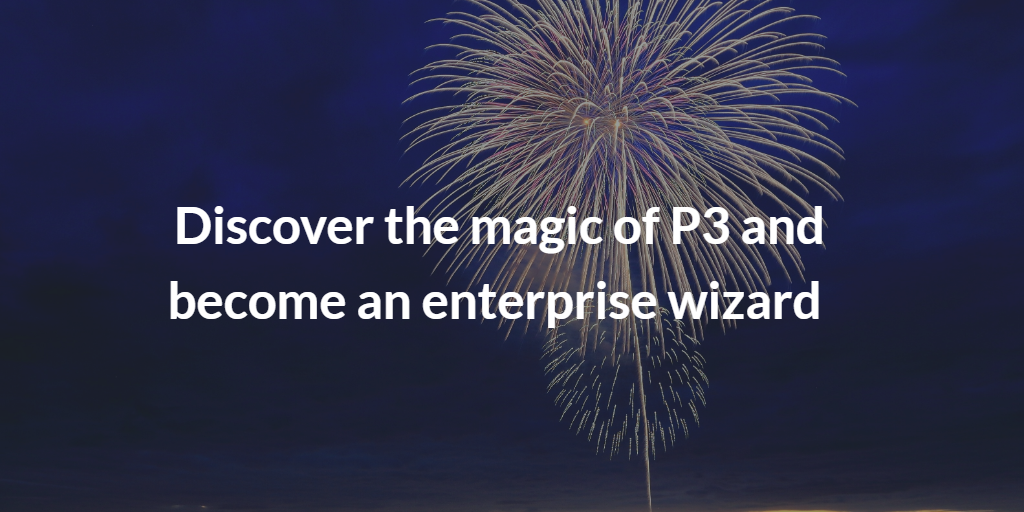Categories
Tags
Newsletter
Subscribe to the QRP International neswletter and get all the news on trends, useful contents and invitations to our upcoming events
Subscribe
The first Harry Potter book came out in 1995, but the story took twelve long years to unfold. Many questions were unanswered until the final, seventh book was published in 2007, when all become clear.
Project Management has its magic moments too. Project Management is a young discipline, essentially dating from the 1950’s. In such a young field, progress is still being made year-by-year. Microsoft Project was born in 1985, Prince2 in 1996. Now 2011 marks another key date, with the completion of the OGC framework¹.
The OGC project management framework was published as a series of books. The story took 15 years to unfold, even longer than Harry Potter. Many questions were unanswered until the final book was published… and then all became clear.
The publication of the MoP book in 2011 was a major milestone. It completed the framework that gives a coherent and complete solution for the enterprise. The completed framework fits together like a completed jigsaw puzzle. P3 means Projects, Programmes and Portfolios – with MoP, the P3 framework is now in place.
The OGC story started in 1996 with Prince2, and comprises 4 books:
Prince2 is the cornerstone of P3, providing organisations with a proven, easy to learn Project Management method. In the last 25 years, the world of work has increasingly moved to management-by-project to manage business change activities; and Prince2 has provided an excellent “recipe” for management-by-project, as it is built around a simple, repeatable process. Another strength of Prince2 is the effective governance model – Prince2 has two key roles, the project manager and the project executive, who work as a senior-plus-junior team. This makes Prince2 an attractive, efficient solution for many organisations, who can thereby bring more staff into project management roles.
MSP, used for Programme Management, is a second cornerstone of P3. When an organisation needs to run a major change, it can turn to MSP. Dating from 1999, MSP addressed the question of “really big projects” – if it’s too complex to be a project or if there will be resistance to change, then you need programme management. Like Prince2, MSP is an easy-to-learn method, based on a simple, repeatable process. Like Prince2, it has a good governance model – notably, MSP has two roles sharing the day-to-day management of the programme – the Programme Manager and the Business Change Manager. For many organisations, a key appeal of MSP is that it prescribes a mixture of change and stability. Both are important. Businesses need change, but operational teams need stability. MSP gives the recipe for managing this change – from stability through transition then back to stability.
The P3 journey accelerated in 2008. First came P3O, published in 2008. This was a first attempt at building a unified P3 framework, and was followed in 2011 by MoP which successfully finished the job. Both provide an enterprise vision, both provide big picture solutions for P3.
P3O is about offices to support P3 – P3O means “Portfolio, Programme and Project Offices”.
Since the arrival of the internet and globalisation, the pace of change has increased. Many organisations need ever-faster change. P3O addresses the big-picture question of how to support change. The “O” in “P3O” means offices, which are the various support structures for P3. The P3O book was the first glimpse of an enterprise framework for P3. It contains solid guidance on how to justify and set up a P3O structure. A skilled P3O practitioner has a “recipe” for building a P3O solution, step by step.
MoP means Management of Portfolios. A portfolio is a high level collection of change initiatives, so this is a big-picture, top-down approach. MoP includes a repeatable process for portfolio definition which can become part of the annual budget process of the organisation.
MoP links together the different parts of the enterprise framework:
• MoP links to the enterprise strategy: how to deliver your strategy, what investments to make and how to maximise return on investment.
• MoP links to business as usual (BAU), by recognising the need for balance between BAU stability and P3 change.
• MoP links to programmes and project management – the portfolio is delivered through projects and programmes
• MoP links to P3O as the portfolio is supported by the portfolio office.
These four books, Prince2, MSP, P3O and MoP make the P3 enterprise framework. Each book is self-sufficient and can be used independently of the others. But taken together they add more value.
The starting point for value is the common glossary – this sounds trivial, but in reality it brings much-needed clarity and definition to the world of projects, programmes and portfolios. Furthermore, the framework is supported by a common, transversal measurement tool (the P3M3 model), allowing an organisation to measure its progress in the use of P3 best practice.
Much more important is the added value of making connections. One example is the common use of the Business Case. The top-down view from MoP is the need to protect the Return on Investment for the organisation. MoP suggests to check the business case for every change initiative. If the organisation is also using Prince2 or MSP, then the connection is simple, as every Prince2 project or MSP programme should have a business case. There are dozens more examples – the completed OGC framework is like a completed jigsaw puzzle, full of connections.
So the framework is now in place. Harry Potter was magic. The OCG framework can deliver magic too. It’s remarkably quick to learn – each module takes just a week… so in a month you can be a certified enterprise wizard. You don’t need to wait years to get the answers, the magic is at your command.